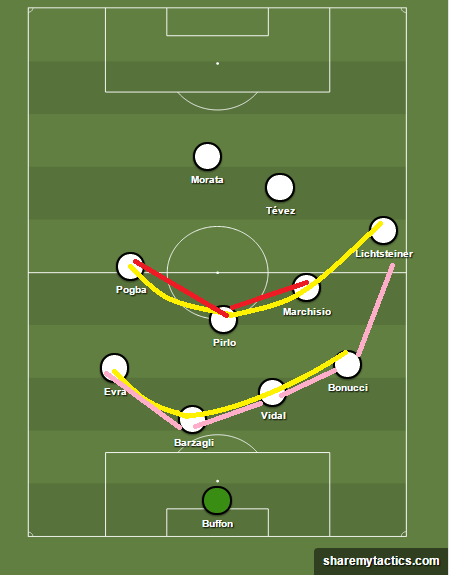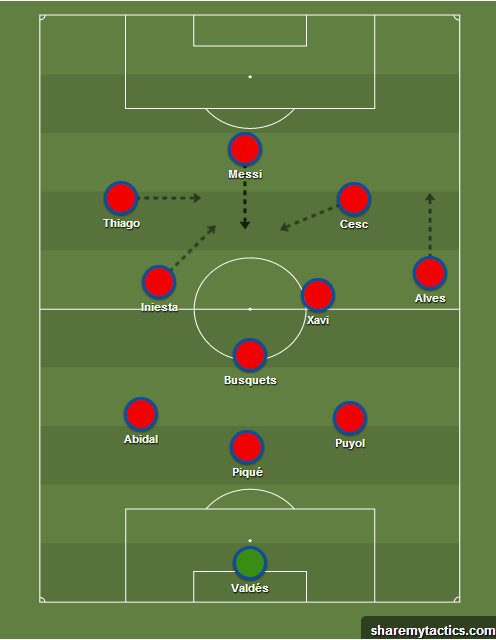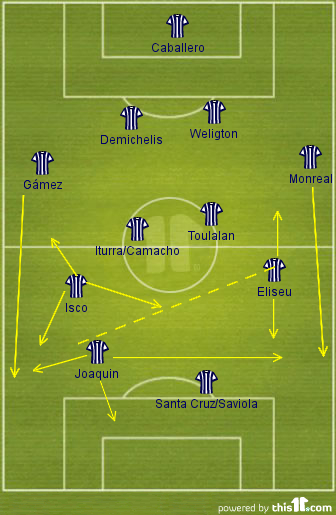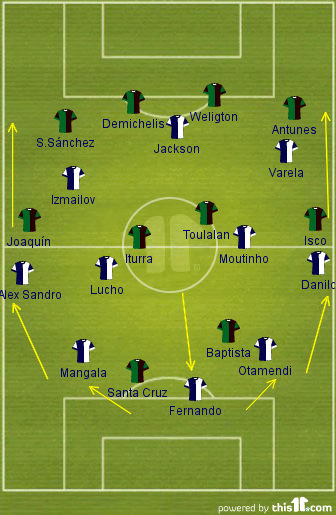- Corinthians truly are the sum of their parts but they will need to buy themselves time inside Chelsea’s half to do justice to the nature of their football
- Incision, precision and an ability to maintain shape both when attacking and defending are the identity of this side
- Players are rotated, the formation is tweaked and yet coach Tite (pictured below) knows his game plan will be adhered to

Sitting pitchside in the October balm of the Joaquim Grava training-compound on the outskirts of São Paulo, Corinthians coach Tite knows what elements his team needs if it is to triumph against Chelsea two months later in Yokohama.
In fact, Tite has been clear about this since, well, who knows: perhaps since his team’s July conquest of the Copa Libertadores which settled the identity of South America’s representative to be sent to the Club World Cup. Conceivably, it could even have been as far back as May when Corinthians’ participation was yet uncertain and Didier Drogba and Company conjured up an east-bound ticket from Munich. This is because, beyond the vagaries of micro-tinkering in the face of impending opponents, Corinthians know what they play at, and play it well.
No less a figure than Diego Simeone, judging from his words, would appear to find common cause with Tite:
“Playing pretty is not the same as playing well. Playing well is knowing what you’re playing at.”
Simeone here questions the legitimacy of much of the ideological grandstanding that posits results-based football in opposition to aesthetically-pleasing football. Corinthians have predictably been subject to snide remarks from journalists, fans and even rival professionals who denounce a supposedly unadventurous spirit as the elixir of their successes. Even Muricy Ramalho, unwisely, chose to caricature the Timão’s playing style:
“They never set out to win the game, they seek to live off their rivals’ errors, always. That’s Corinthians’ gameplan: lined-up behind ball, they cede ground for their rival to play and when you slip up, when you make a mistake, you’re hit with the counter-attack (…)”.
Ramalho would have been better served holding his tongue on two counts: firstly, Corinthians don’t lie in wait for the error, they force the opposition into making an error. In that sense, they couldn’t be better exemplars of proactivity. Admittedly, this proactivity is not coupled with the panache and kamikaze verve that Jorge Sampaoli’s Universidad de Chile were only too happy to exude, but Corinthians, while not expansive, think and move as one. Nowt of the ‘artisans propping up the artists’ formula for Tite, then.
The second problem which Muricy either unwillingly or unwittingly failed to see, lay closer to home. His Santos side oscillated between two extremes of broken-team alchemy, with neither fully attuned to the vicissitudes of modern collective-minded football. Some days he would plump for the securities of seven workers indulging a free-spirited trio. On others when he felt sufficiently fortified, he would indulge his taste of the aesthetic by augmenting the advanced sectors of his team; more forward company for Neymar and more breaches in the hull for defenders to contend with. It seems fitting then that Ramalho sent out his Santos charges with creative licence bolstered by a back five to face Barcelona in last year’s edition of this competition. Neither fish nor fowl, subsequently they were mauled.
And so what are these two elements so dear to Tite? Depth and time. Corinthians look to gain depth when the situation calls for an incisive raid on the opponent’s area, and they seek to draw out time so as to accumulate possession inside the opponent’s half when they feel that they need to improve the quality of their second-last ball.
All this is done with a view to remaining compact. What are the benefits of staying compact: are they offensive or defensive? For Tite, both and neither; the one is inseparable from the other.
How Tite sets out to achieve either depth or time is as much a function of the personnel available as well as the desired variation he looks to configure ahead of the Paulinho & Ralf double-pivot. Corinthians’ formation, it could be said, varies between 4-2-3-1 and 4-2-4-0 as a consequence of whoever is leading the line. But the switches in formation belie the incorruptible and utterly coherent model of play that suffuses whatever incarnation of Corinthians enters the field.
That model of play calls for pressure in a compact medium block punctuated by bouts, typically early doors in matches, of high pressing. This by Brazilian standards is remarkable. While 4-2-3-1 has made significant inroads in the Brazilian championship, such numbers ring hollow; the formation does not represent some great import of European best practice into the Brazilian game. The lifeblood of compactness and cohesion which makes the formation viable, generally speaking, in Europe is notably absent among its Brazilian club practitioners. Not so the case with Corinthians.
So, let us examine the criteria that Tite uses to win depth and time in order to maintain a healthy balance between the four phases of play.
When we say that Tite values depth, we are not concerned with notions of squad size but movement on the pitch, and the movement he desires is profound and vertical play that will penetrate the opposing back-line and rapidly be concluded.
Another preoccupation of Tite’s is the tyranny of time, something which Corinthians must hope to assuage. Put simply, Chelsea will have more of the ball, thereby making it imperative that the South American champions extract the maximum enjoyment possible from those precious periods when the ball is Brazilian in ownership. Time begets time. And so once time as been earned, Corinthians will look to prolong their presence in Chelsea’s half. To be sure, Tite will like his men to take up good positions and exploit certain pockets of space, but space is comparatively a lesser commodity than time to the paulistano team. It is as if, during spells of possession, a metaphysical clock envelopes the minds of players, and for Corinthians players, the clock ticks to an accelerated rhythm. Got to make that final pass, the clock is ticking down, the gates are closing. For Chelsea players, the inverse is true.
In Peruvian targetman Paulo Guerrero, Corinthians have a focal point whose lay-offs and flick-ons permit the more direct of the wide players (typically Jorge Henrique who usually patrols the right, although Emerson or Romarinho can offer a similar threat from the left) to either cut in towards goal or to connect with balls that Guerrero diverts diagonally into the channels behind the full-backs. In such a scenario, swift execution is the order of the day.

Guerrero’s role as a pivot enables Corinthians to advance en masse in addition to threading balls through the channels.
Alternatively, when Corinthians wish to prolong their possession spell, Guerrero’s hold-up play allows the whole team to step up into the opponent’s half: the greater the proximity to one another, the less prone Corinthians are to misplacing passes and the further and quicker they can progress unimpeded. When thwarted, the Corinthians players are sufficiently close to one another as to crowd the area of the pitch where the turnover has occurred. Corinthians do lose the ball, but they lose it very well.
An even more effective time-hogging recourse open to Tite comes when he cannot/does not field Guerrero (as was more representative of the successful Libertadores campaign prior to the Peruvian’s arrival): in this case, it is the twin No. 10s, Danilo and Douglas (in lieu of the departed Alex Meschini) whose technical mastery allows Corinthians to soak up the ball and draw teammates in near. This was the formula from the Libertadores final versus Boca Juniors. Emerson, a combative and pacey striker who hitherto had spent most of the season attacking from the left wing (with playmakers Alex and Danilo alternating between the trequartista and false 9 positions), was tasked with returning to his central striking roots, albeit without a fixed reference to feed off. Danilo and Alex both loitered in the band of three behind him (alongside Jorge Henrique) and provided the pause as Emerson applied direct, aggressive running through whatever gaps he could find along the Boca back line (with a tendency to flit from the central to inside- and outside-left channels, thereby leaving the inside- and outside right thoroughfare free for Jorge Henrique).

Playmakers Douglas and Danilo alternate the No.10 and No. 9 posts: Corinthians prolong possession and couple this with incision from the flanks
Tite manages two shapes when it comes to Corinthians’ static defensive phase. Following its transition to defence, the Timão adopts two banks of four, with one member of the initial band of three forming a first line of pressure and with the No 9 (nominal or real) free to provide an outlet: very much a 4-4-1-1, and something akin to what Rafa Benítez expects of teams under his command.

Corinthians defending in two banks of four in static defensive phase
Whenever Guerrero is absent, a most interesting variant on this procedure occurs. Amidst the positional diligence of Jorge Henrique on the right flank and all the positional interchanges that Corinthians exploit closer to the inside-left channel, Tite tries to prevent his left-back Fábio Santos becoming exposed to forays down the left by having Emerson and the wider of the playmakers (usually Danilo) divvy up the hard slog between them. Emerson, even if coming from a central position, will typically harry his opposing full-back as far as midfield before Danilo takes over and composes the left sector of the midfield bank of four inside Corinthians’ half.

Even when playing more centrally as a striker, Emerson is not adverse to assisting Danilo defend the left flank
The other defensive arrangement which Corinthians take up is 4-1-4-1, and this takes shape whenever they seek to despoil their opponent’s build-up play at a medium or even medium-high band of the pitch (basically pressing is initiated around halfway line and the beginning of the final third). In such a movement, Paulinho’s box-to-box qualities come to the fore as he shuttles higher up the field to help the line of three initiate pressing.

Paulinho steps up to initiate pressing as Corinthians defend in an aggressive medium/ medium-high block of 4-1-4-1
Against Chelsea, which route of attack will Tite likely prioritise? The coach speaks of the torment that is the delicate art of trying to preserve equilibrium, a favourite expression of his. Without the verticality best facilitated by Guerrero’s coalface shift or Emerson’s sometime central role, he risks inviting Chelsea to step up and pressure Corinthian’s build-up at the back when tranquility in possession will already be at a premium. But without their pair of No. 10s, Corinthians would have to content themselves with even further-diminished spells of possession and less scope for pressing Chelsea as a unit further upfield.
This Corinthians side is a worthy flagship for South American football, even if it is not exactly representative of Brazilian domestic game. But for the most cohesive and convincing side to win the Libertadores in years, the distilled expression of a footballing idea as opposed to overreliance on individual brilliance, that incongruence may serve them well in the task ahead.
André Rocha was the man sitting at the table opposite Tite that day at Corinthians’ training ground, and it is largely thanks to André that we are privy to the thoughts of one of the sharpest and most visionary minds engaged in Brazilian football today. He can be followed at http://espn.estadao.com.br/blogs/olhotatico#1





















